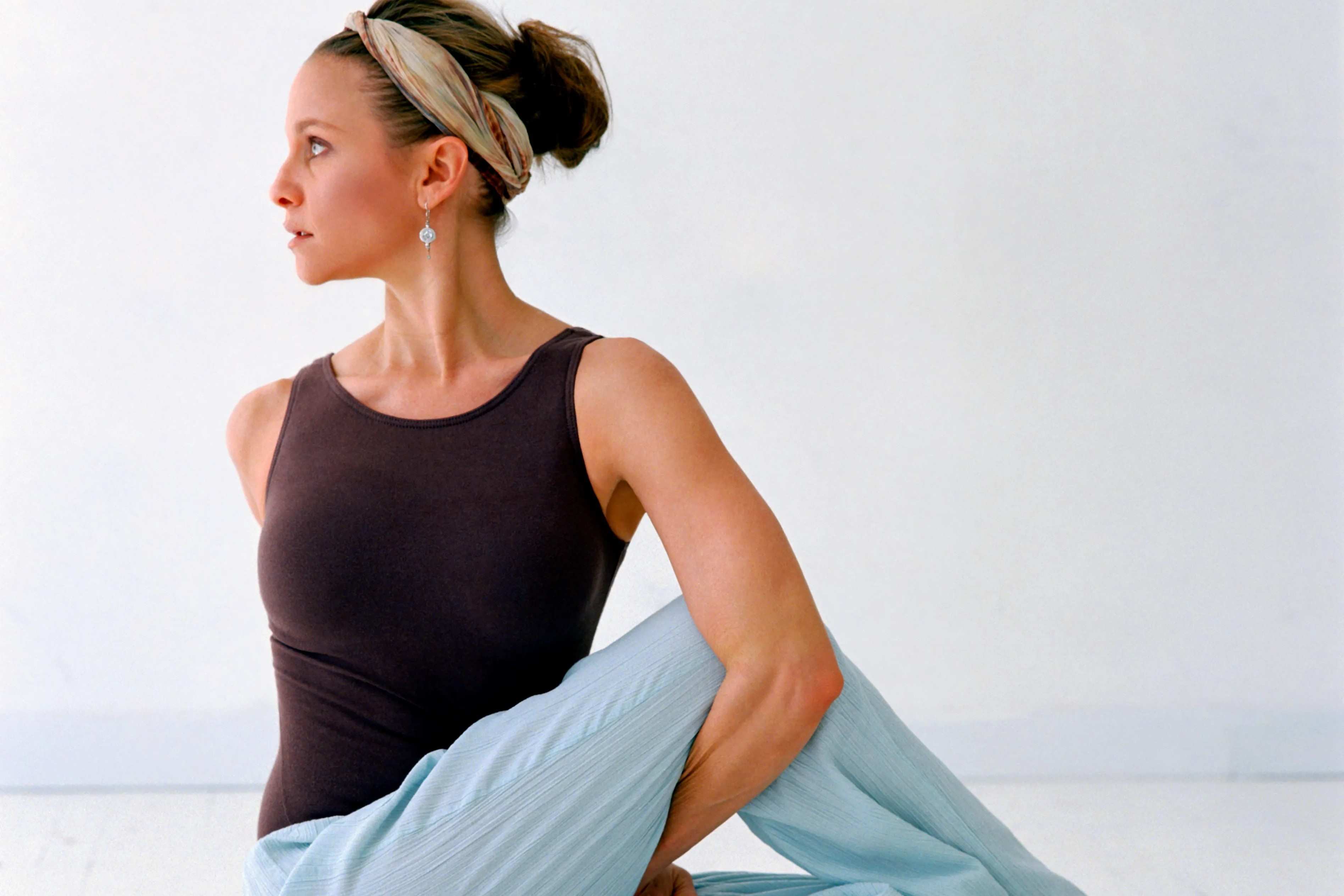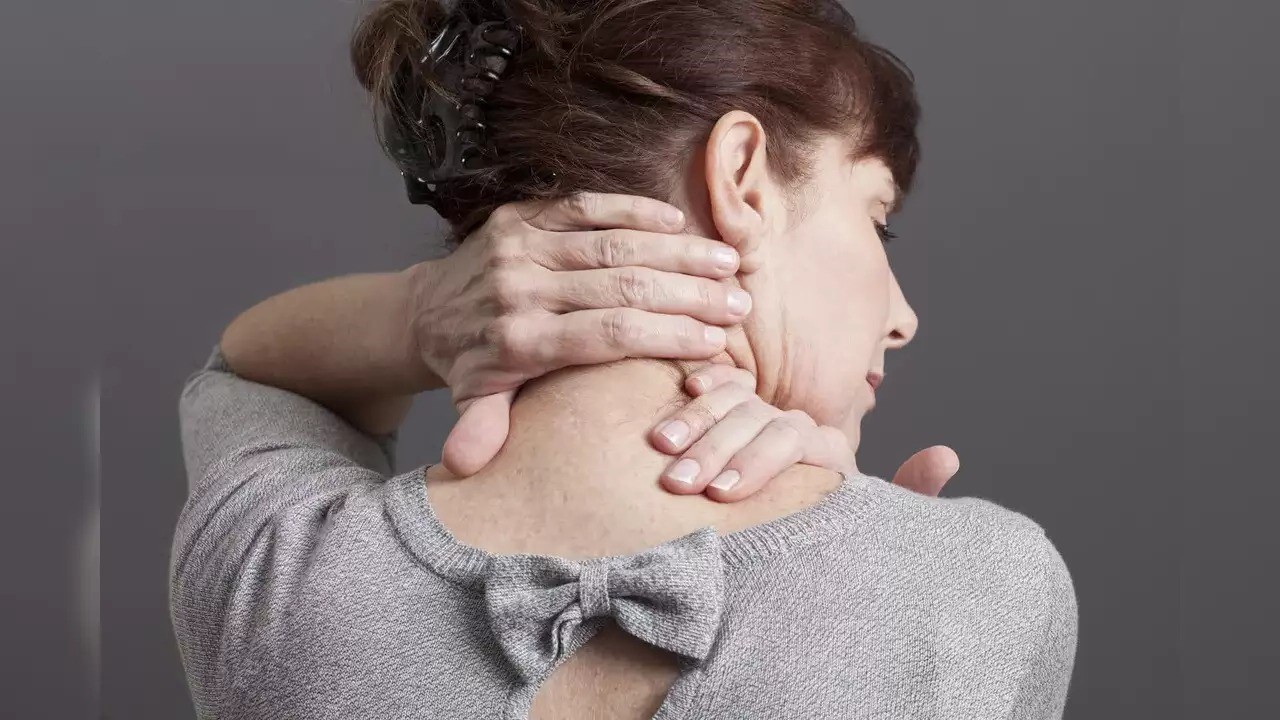Home>Health and Wellness>Unlock The Secret To Cracking Your Upper Back With These Genius Techniques!


Health and Wellness
Unlock The Secret To Cracking Your Upper Back With These Genius Techniques!
Published: January 19, 2024
Discover effective techniques for unlocking and relieving tension in your upper back with our expert tips. Improve your health and wellness today!
(Many of the links in this article redirect to a specific reviewed product. Your purchase of these products through affiliate links helps to generate commission for Noodls.com, at no extra cost. Learn more)
Table of Contents
Introduction
Are you among the countless individuals who often find themselves hunched over a desk, straining their upper back and longing for relief? If so, you're not alone. The upper back, also known as the thoracic spine, is a common area of tension and discomfort for many people. Whether it's due to poor posture, long hours sitting at a desk, or physical exertion, the upper back can bear the brunt of our daily activities, leading to stiffness and discomfort.
In this comprehensive guide, we will delve into the art of cracking your upper back, exploring the benefits, safety measures, and genius techniques to provide much-needed relief. By understanding the anatomy of the upper back and learning safe and effective methods for cracking it, you can take proactive steps to alleviate tension and improve your overall well-being.
So, if you've ever yearned for a satisfying crack in your upper back or sought solace from persistent discomfort, you're in for a treat. Get ready to unlock the secret to cracking your upper back with these genius techniques!
Understanding the Upper Back
The upper back, scientifically referred to as the thoracic spine, plays a pivotal role in supporting the body's framework and facilitating various movements. Located between the cervical (neck) and lumbar (lower back) regions, the thoracic spine consists of twelve vertebrae labeled T1 to T12. These vertebrae serve as the foundation for the rib cage, providing protection for vital organs and offering structural support for the upper body.
The thoracic spine's unique curvature allows for a wide range of motion while maintaining stability. This region is instrumental in enabling rotational movements and flexion, essential for activities such as reaching, twisting, and bending. Additionally, the upper back serves as an anchor for the shoulder girdle, contributing to arm and shoulder mobility.
The muscles surrounding the thoracic spine are equally crucial in maintaining posture and facilitating movement. The trapezius, rhomboids, and erector spinae muscles are among the key players responsible for stabilizing and mobilizing the upper back. These muscles work in harmony to support the spine, shoulder blades, and rib cage, allowing for fluid and controlled movements.
Understanding the upper back's anatomy is essential for recognizing the impact of daily activities on this region. Prolonged periods of sitting, slouching, or engaging in repetitive motions can lead to muscle tension, stiffness, and discomfort in the thoracic spine. Furthermore, poor posture and sedentary lifestyles can contribute to imbalances and misalignments in the upper back, exacerbating the strain on this vital area.
By gaining insight into the intricate structure and function of the upper back, individuals can develop a deeper appreciation for the importance of maintaining its health and mobility. Recognizing the unique demands placed on the thoracic spine empowers individuals to adopt proactive measures to alleviate tension, improve posture, and enhance overall well-being.
In the following sections, we will explore the benefits of cracking the upper back, safety precautions, and genius techniques to effectively address discomfort and promote optimal function in this pivotal region. Let's embark on a journey to unlock the secrets of cracking your upper back and discover the transformative impact it can have on your well-being.
Benefits of Cracking Your Upper Back
Cracking your upper back can yield a myriad of benefits, ranging from immediate relief to long-term improvements in mobility and overall well-being. Here are the compelling advantages of incorporating upper back cracking into your wellness routine:
-
Alleviation of Tension and Discomfort: The act of cracking the upper back can provide instantaneous relief from accumulated tension and discomfort. By releasing built-up pressure within the thoracic spine, individuals often experience a sense of lightness and diminished tightness in the upper back region. This can significantly reduce the discomfort associated with prolonged sitting, physical exertion, or poor posture.
-
Enhanced Mobility and Flexibility: Cracking the upper back can contribute to improved mobility and flexibility in the thoracic spine. As the vertebrae are gently manipulated and realigned, individuals may notice increased ease of movement and a greater range of motion in the upper back. This enhanced flexibility can facilitate daily activities, such as reaching, twisting, and bending, while promoting a more fluid and comfortable range of motion.
-
Stress Reduction and Relaxation: The act of cracking the upper back can induce a sense of relaxation and stress reduction. As tension is released from the thoracic spine, individuals often experience a profound sense of relief and relaxation throughout the upper back and shoulder region. This can be particularly beneficial for those who carry stress-related tension in the upper back, offering a soothing respite from the demands of daily life.
-
Improved Posture and Alignment: Regularly cracking the upper back can contribute to improved posture and spinal alignment. By addressing minor misalignments and imbalances in the thoracic spine, individuals can work towards maintaining a more upright and balanced posture. This can have a positive impact on overall spinal health, reducing the likelihood of developing postural issues and associated discomfort.
-
Facilitation of Circulation and Vitality: The release of tension through upper back cracking can promote improved circulation and vitality in the surrounding muscles and tissues. Enhanced blood flow to the upper back region can support muscle recovery, reduce stiffness, and promote a heightened sense of vitality and well-being. This can be particularly beneficial for individuals who experience sedentary or desk-bound lifestyles, where circulation may be compromised.
Incorporating upper back cracking into your wellness routine can yield a multitude of benefits, offering a holistic approach to addressing tension, discomfort, and mobility issues in the thoracic spine. By understanding and embracing the advantages of this practice, individuals can harness its transformative potential to enhance their overall well-being and quality of life.
Precautions and Safety Measures
Prior to embarking on any technique for cracking the upper back, it is paramount to prioritize safety and adhere to essential precautions. While upper back cracking can offer relief and promote mobility, it is crucial to approach this practice with mindfulness and attentiveness to minimize the risk of injury or discomfort. Here are the key precautions and safety measures to consider before engaging in upper back cracking:
-
Consultation with a Healthcare Professional: Before attempting any upper back cracking techniques, individuals with pre-existing medical conditions or chronic back issues should seek guidance from a qualified healthcare professional. Consulting with a chiropractor, physical therapist, or physician can provide valuable insights into the suitability of upper back cracking based on individual health considerations.
-
Understanding Personal Limitations: It is imperative to recognize and respect personal limitations when it comes to upper back cracking. Individuals should refrain from attempting forceful or aggressive manipulation of the thoracic spine, especially if they have a history of spinal injuries, osteoporosis, or other musculoskeletal conditions.
-
Gentle and Controlled Movements: When performing upper back cracking techniques, it is essential to prioritize gentle and controlled movements. Sudden or jerky motions can potentially strain the muscles and ligaments surrounding the thoracic spine, leading to discomfort or injury. Emphasizing smooth and deliberate movements can mitigate the risk of adverse effects.
-
Avoiding Excessive Frequency: While upper back cracking can offer relief, it is advisable to avoid excessive frequency in performing these techniques. Over-reliance on cracking the upper back may lead to hypermobility or instability in the thoracic spine, potentially exacerbating existing issues or predisposing individuals to discomfort.
-
Seeking Professional Guidance: For individuals new to upper back cracking or those seeking advanced techniques, seeking guidance from a qualified professional, such as a chiropractor or physical therapist, can provide personalized instruction and ensure the safe and effective application of these methods.
By heeding these precautions and safety measures, individuals can approach upper back cracking with a heightened awareness of their well-being and minimize the likelihood of adverse outcomes. Prioritizing safety and mindfulness in the practice of upper back cracking is instrumental in fostering a positive and beneficial experience, ultimately contributing to improved comfort and mobility in the thoracic spine.
Genius Techniques for Cracking Your Upper Back
Cracking the upper back can be achieved through various ingenious techniques that prioritize safety, effectiveness, and individual comfort. These techniques aim to release tension, improve mobility, and promote overall well-being in the thoracic spine. It is essential to approach these methods with mindfulness and attentiveness to ensure a positive and beneficial experience. Here are some genius techniques for cracking your upper back:
1. Thoracic Extension Stretch:
This technique involves sitting on the floor with your back against a wall or using a firm, supportive surface. Interlace your fingers behind your head and gently arch your upper back over the support, allowing the shoulder blades to spread apart. This stretch promotes extension in the thoracic spine, facilitating the release of tension and encouraging a satisfying crack in the upper back.
2. Foam Roller Mobilization:
Utilizing a foam roller, individuals can perform gentle thoracic spine mobilization to alleviate stiffness and promote flexibility. Lying on the foam roller with it positioned horizontally along the upper back, slowly extend and flex the upper back over the roller. This controlled movement helps to realign the vertebrae and may result in a relieving crack in the thoracic spine.
3. Seated Thoracic Rotation:
Seated thoracic rotation involves sitting on a chair or the floor with legs crossed. Place one hand behind your head and the other on your outer thigh. Gently rotate your upper body, using the hand on the thigh to guide the movement. This technique encourages rotational mobility in the thoracic spine, potentially leading to a satisfying release of tension and a subtle crack in the upper back.
4. Cat-Cow Stretch:
Derived from yoga, the cat-cow stretch is beneficial for promoting spinal mobility and releasing tension in the upper back. Start on all fours, alternating between arching your back upward (the "cat" position) and allowing your back to sway downward (the "cow" position). This dynamic movement can help alleviate stiffness and may result in natural cracking of the thoracic spine.
5. Self-Applied Thoracic Manipulation:
Individuals can perform self-applied thoracic manipulation by clasping their hands behind their head and gently leaning back over a supportive surface, such as a stability ball or firm cushion. This controlled maneuver can create traction in the thoracic spine, potentially leading to a satisfying release and crack in the upper back.
By incorporating these genius techniques into your wellness routine, you can effectively address tension, stiffness, and discomfort in the upper back while promoting optimal mobility and overall spinal health. It is important to approach these techniques with mindfulness and respect for personal limitations, ensuring a safe and rewarding experience.
This comprehensive guide has unveiled the secrets to cracking your upper back, empowering you to embrace these genius techniques and reap the transformative benefits they offer. With a deeper understanding of the thoracic spine and the ingenious methods for alleviating tension and promoting mobility, you are equipped to embark on a journey towards enhanced well-being and comfort in your upper back.
Conclusion
In conclusion, the art of cracking your upper back holds profound potential for alleviating tension, promoting mobility, and enhancing overall well-being. Through a comprehensive understanding of the upper back's anatomy, the benefits of cracking techniques, essential precautions, and ingenious methods, individuals can embark on a journey towards transformative relief and comfort in the thoracic spine.
By recognizing the intricate structure and pivotal role of the thoracic spine, individuals gain a deeper appreciation for the importance of maintaining its health and mobility. The upper back, nestled between the cervical and lumbar regions, serves as a cornerstone for posture, movement, and stability. Understanding the impact of daily activities on this region empowers individuals to adopt proactive measures to alleviate tension, improve posture, and enhance overall well-being.
The benefits of cracking the upper back are multifaceted, encompassing immediate relief, improved mobility, stress reduction, enhanced posture, and facilitated circulation. These advantages underscore the holistic approach that upper back cracking offers in addressing discomfort and mobility issues in the thoracic spine. By embracing these benefits, individuals can harness the transformative potential of upper back cracking to enhance their overall well-being and quality of life.
Prioritizing safety and mindfulness through essential precautions and safety measures is instrumental in fostering a positive and beneficial experience when engaging in upper back cracking techniques. Consulting with healthcare professionals, understanding personal limitations, and emphasizing gentle and controlled movements are vital components of ensuring a safe and effective practice.
The genius techniques for cracking the upper back provide individuals with a diverse array of methods to address tension, stiffness, and discomfort in the thoracic spine. From thoracic extension stretches to self-applied thoracic manipulation, these techniques offer safe and effective approaches to promoting optimal mobility and overall spinal health. By incorporating these ingenious methods into their wellness routines, individuals can experience the profound benefits of upper back cracking while fostering a deeper connection with their upper back's well-being.
In essence, this comprehensive guide has unveiled the secrets to cracking your upper back, equipping individuals with the knowledge and techniques to embark on a journey towards enhanced well-being and comfort in their upper back. By embracing the transformative potential of upper back cracking, individuals can take proactive steps towards relieving tension, improving mobility, and nurturing the health of their thoracic spine.













